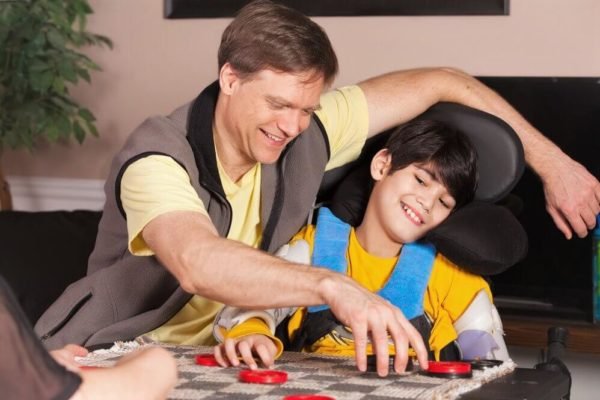Behavior problems in children with cerebral palsy

image source
Research showed that children with cerebral palsy is more likely to show behavioral problems than their non disabled peers.
What causes these behavioral problems:
- Brain injuries.
- They are irritated more easily.
- They feel frustrated more than their peers.
- Some of the disabilities cause a personality change.
- Some experience mental retardation.
- Often their medication is readjusted.
- They are hyperactive.
- Their social and health problems deteriorate.
The following are a few of the problem behaviors that can occur:
- They have temper tantrums.
- They refuse to work.
- They are hyperactive in class.
- They can bully others.
- They may swear a lot.
- They run away.
- They do not comply when asked to do something.
- They may ignore authority.
- They can hurt other children.
The following are internal triggers that can lead to behavioral problems: fatigue, hunger, low self-esteem, thoughts, fears and feelings of rejection.
We also get external triggers such as different tasks that is just too demanding for the child, certain people or too many people at the same time, there may be too much noise, a change in their routine or structure,, if the child is forced to do something or if you touch the child and he does not like touching.
How can we intervene and defuse the problem:
- Understand the child.
- Increase the child's acquisition skills.
- Improve the child's coping and managing skills.
- The child must trust the persons helping him/her.
- Their must be a plan to defuse the problem.
- The peers must also know how to support each other.
- We must identify problems to come.
- Have calming down choices in place.
- We can let the child take time out.
- We can modify seating arrangements.
- We can provide the child with other activities.
- Have eye contact with the child.
- Go down to his level.
- Touch the learners shoulder.
- Talk to the child in a calm but firm voice.
- Tell the child that you can see he/she is angry or sad.
- Have a punching bag the child can use if he/she can.
We as parents and teachers can help others to understand
and we can add support in the following ways:
- We can tell them to be sensitive to the learner having the problem.
- We can tell them to treat the other child with understanding and respect.
- We can tell them that the child is working on his/her problem.
- Tell the other children to ignore the tantrums.
- To the child with the problem we can give positive feedback.
- We must not intensify the bad behavior.
- Rather intensify communication when the child shows good behavior.
- Teach the problem child and the other children coping skills.
- We must have preventative strategies in place.
Just a few tips for crisis management:
- Take a walk with the learner.
- Ask somebody to assist you.
- Hold the child tight when very upset.
- Call the child's parents to come and fetch him/her.
- Ask the crisis commity to come to the class to help
- Or take the learner to the office.
- We can also let the other children leave the room.
If you found this post informative, follow me @stardust or resteem my post if you want to.**


Great Post Dear @stardust :) Up&Resteem
Thank you for upvoting and resteeming my post I really appreciate it, have a blessed Sunday.
Thank you very much @stardust
@anothervoice was here and up voted 😉
Thank you :-)
You are welcome!
I had much the same with raising my daughter with ADHD and Aspergers, Very good advice :)
Glad you think so and strongs with your daughter I know it is not always easy.
Thanks for posting interesting post